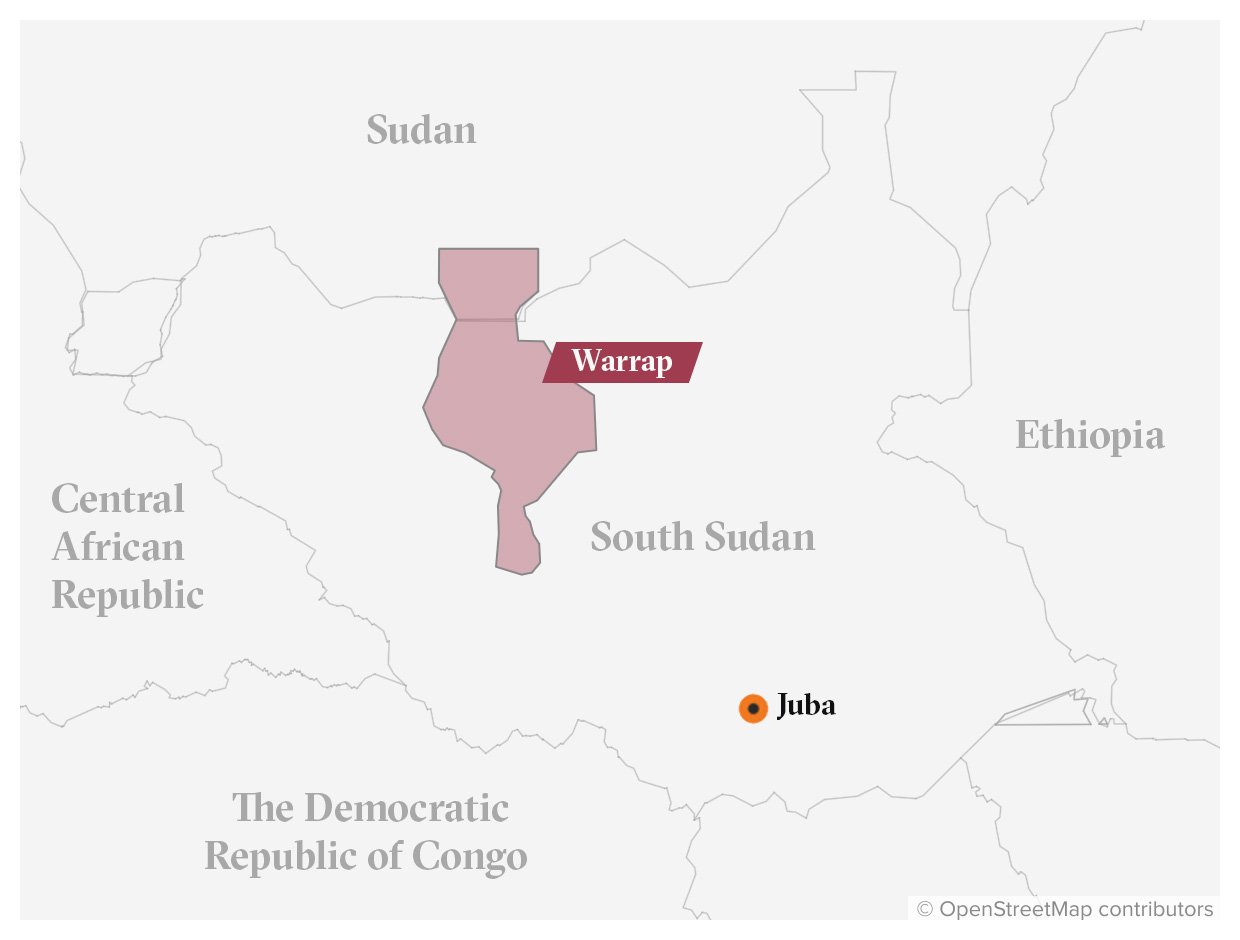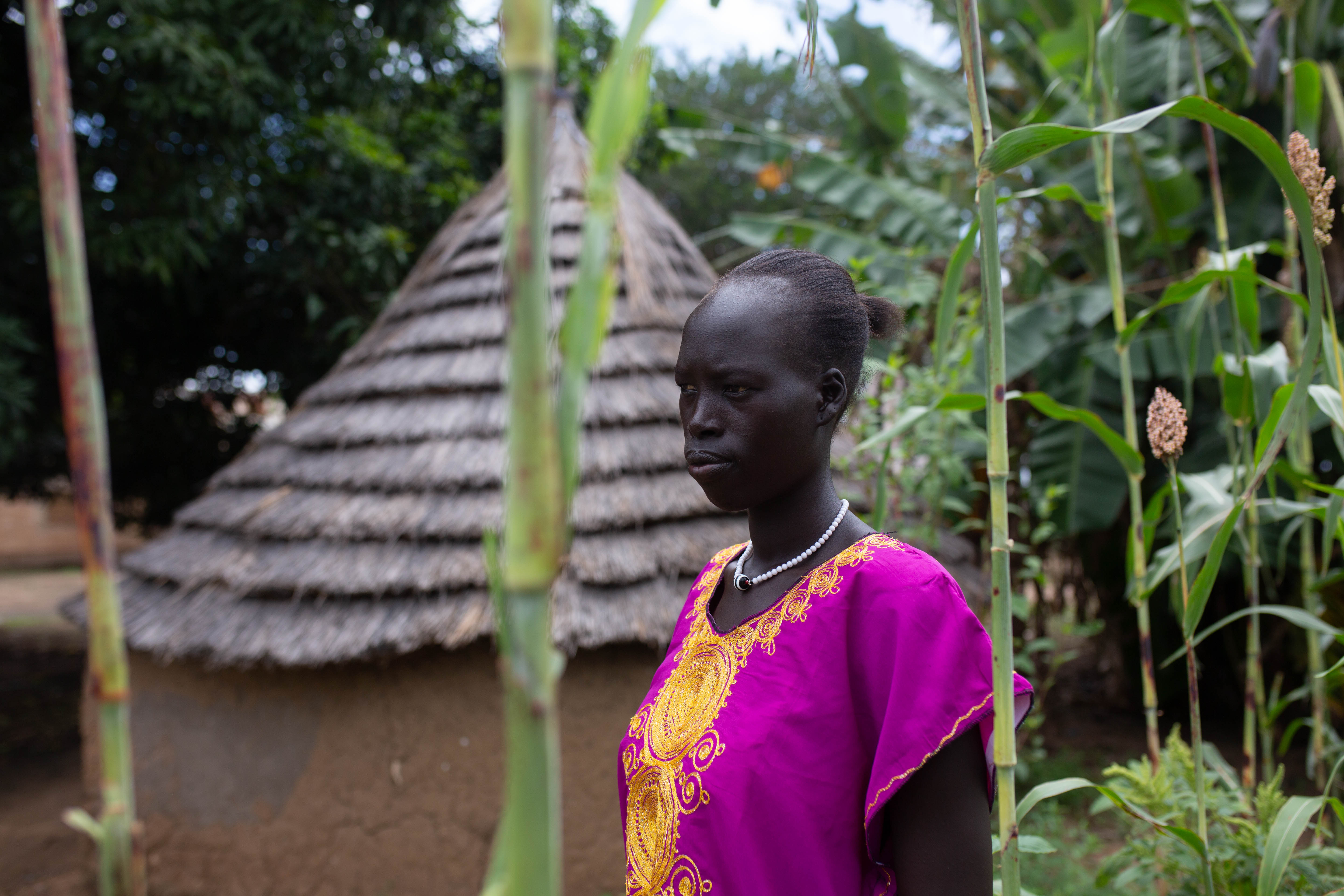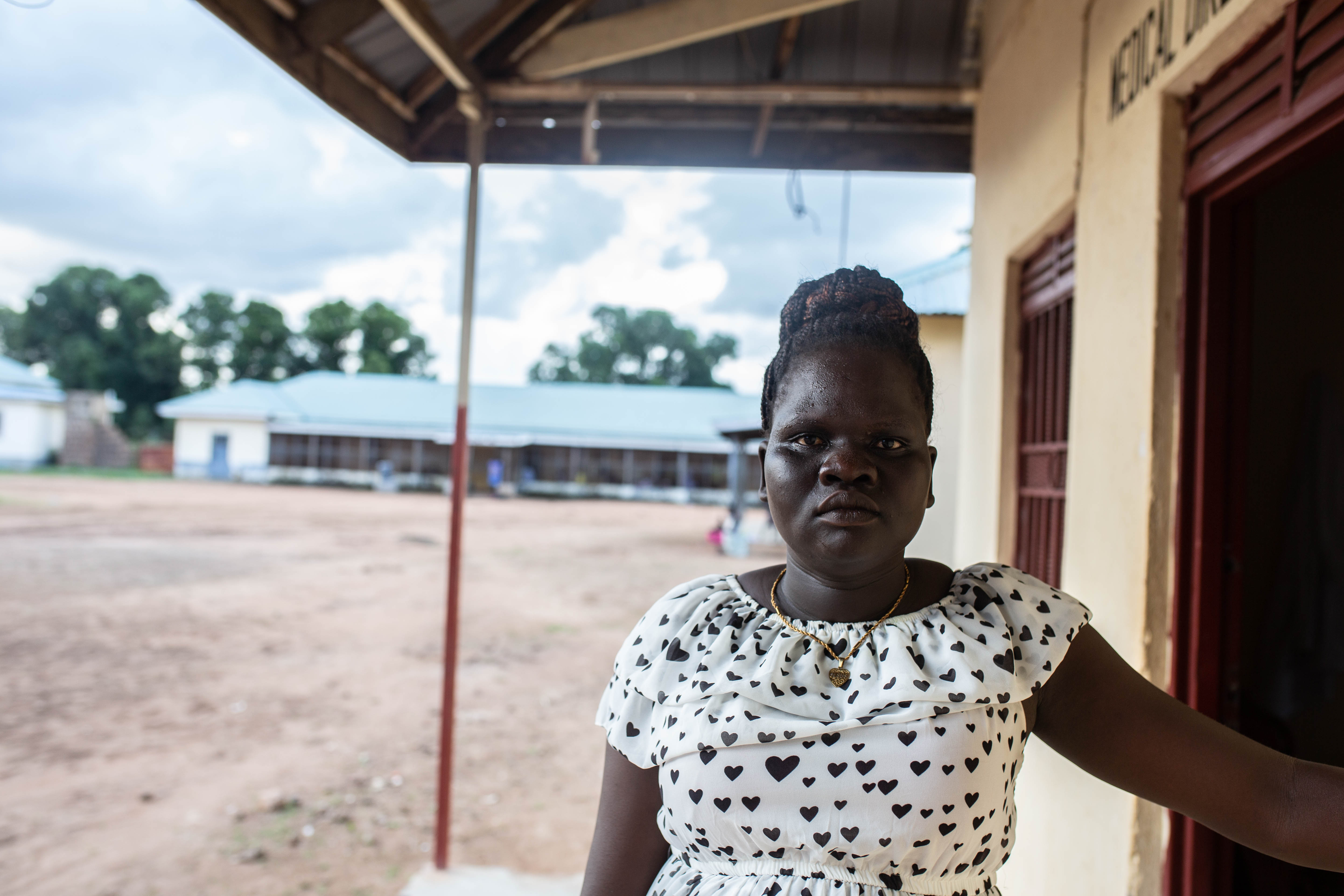It has been just over four years since South Sudan’s main warring parties signed a peace agreement that was supposed to end a five-year civil war that killed at least 400,000 people and plunged parts of the country into famine.
Yet some humanitarian indicators are now worse than they were even during that conflict as the peace deal drives new violence, and the transitional government – which was supposed to organise elections in December – extends its rule by two more years.
Recent conflicts – together with extreme flooding and economic dislocation – have created a renewed famine risk: Almost 8 million of the country’s 12 million population are severely hungry – the highest number since South Sudan’s independence in 2011.

Russia’s invasion of Ukraine has worsened the situation. Aid groups have pared back assistance as donors reallocate budgets, while food price inflation has eroded people’s purchasing power and the capacity of communities to help their most vulnerable.
“In the past, if you had food in your home, and learnt others had nothing to eat, you would give half to other households,” said Athiang Matong, a 25-year-old from Warrap, a northern state impacted by flooding and conflict. “But none of this is now functioning.”
The following humanitarian briefing is based on two weeks of reporting in Juba, the capital, and in Warrap’s Greater Tonj region. We spoke with dozens of community leaders, South Sudanese researchers, and civil society groups.
Though the briefing focuses on current events, the humanitarian crisis here has a much longer history – of slavery and colonialism, and of long civil wars that dispossessed millions and produced a predatory ruling elite supported by international actors.
Persisting conflict: ‘Almost half of the country is fighting itself’
The current transition commenced in 2020 after President Salva Kiir formed a unity government with his wartime rival, Vice President Riek Machar. The leaders pledged to support the peace agreement and bury their long-standing differences.
Yet much of the agreement is unimplemented, and Kiir is accused of using the peace process to weaken and co-opt rivals. Clashes between opposition splinter groups, and between Kiir and Machar’s forces, have displaced tens of thousands of people this year.
Meanwhile, militias and community defence groups – neglected by a peace deal focused on formal fighting forces – are engaged in conflicts around the country. The latest violence, involving groups in the north, killed 25 people just last week.
Edmund Yakani, a civil society activist, said he has counted over 30 major local conflicts in recent years, of which he argues none have been properly resolved. “Almost half of the country is fighting itself,” Yakani told The New Humanitarian from his office in Juba.
These so-called subnational conflicts have a severe impact on people. Militias are often closely related to the communities they are targeting and know how to inflict maximum damage – from mass cattle theft to organising raids during planting and harvest periods.
Violence involving local militias and cattle raiding has been so bad in Greater Tonj in recent months that Athiang Matong said her community gave events a name: Riang Baai, which means disaster of the home area in the Dinka language.

“When a disaster involves the death of a human being, that is when we give it a name,” said Matong, who is 25 and escaped to the town of Thiet along with her four children back in June. “Conflict has caused havoc to my household,” she added.
The fighting in Greater Tonj and other parts of the country has several layers. According to residents, much of it is driven by local concerns, from redress for past violence to the frustrations of young people who see few opportunities, even during peacetime.
Security forces have been trying to disarm militia groups in some states, but trust in the army is low, said Mario Lau, a government official in Tonj South county. “You might see that next year youth take guns again because they feel they are not protected,” he said.
Subnational conflicts can also reflect national divisions, since they regularly pull in government and opposition forces – the majority of whom have still not joined a unified national army, as was stipulated by the peace accord.
Conflicts are tied to national elites too. Commanders and politicians have been competing for power within the transition by mobilising local groups that will fight for their cause – a form of politics that the peace agreement is seen as entrenching.
“In trying to bring up your image or personality to be recognised, you have to mobilise youth at the state and county level,” said Michael Madit Akot, a youth leader in Warrap, the home state of many South Sudanese elites and a major theatre of recent violence.
The involvement of national elites makes subnational conflicts harder to resolve. Peacebuilding organisations, for example, focus on bringing conflicting communities together for workshops and dialogues – yet they often overlook those pulling the strings.
Still, communities do have tools to resolve conflicts and defy manipulation, said Julia Duany, a civil servant and peace activist who authored a book called Making Peace and Nurturing Life: A Memoir of an African Woman About a Journey of Struggle and Hope.
“Politicians have divided people, but the time will come when people will realise that we are not benefiting from what they are doing,” Duany, who was involved in various grassroots initiatives that helped resolve communal strife in the 1990s, told The New Humanitarian.
A fourth year of extreme flooding: ‘Nobody stops to help us’
Conflict isn’t the only issue driving humanitarian needs: A fourth year of mass flooding has impacted almost one million people so far in 2022, according to the UN’s emergency aid coordination agency, OCHA.
Seasonal flooding is normal in South Sudan – its topography funnels in water from neighbouring countries – but the scale of the issue since 2019 has no recent precedent. Experts say it is linked to climate change and the government’s weak capacity to respond.
The flooding has disrupted household production and spurred rural to urban migration. It has also pushed armed herders from the vast Sudd swamp into southern agricultural communities, leading to conflicts that political elites are again accused of fuelling.
“This year, there was a lot of bloodshed,” said Nhial Tiitmamer, director of the Environmental and Natural Resources programme at the Sudd Institute, a Juba-based think tank.
Individuals and communities have well-worn ways to cope with crises, but the back-to-back floods – which followed drought events in some areas and conflicts in others – mean these systems are now breaking down.
Mathot Deng, from Palal village, said his family survived crop destroying floods in 2019 and 2020 because they owned cattle. But the cows were raided during a conflict earlier this year, leaving Deng dependent on an NGO cash handout that is now almost exhausted.
Amou Agang from nearby Mabior Yar said she dealt with earlier floods by selling livestock and picking wild fruit. But heavy rains this year killed off her remaining animals, and standing floodwater has made it harder to forage.

Agang is now living in one of a group of makeshift huts lining a dirt road that bisects Mabior Yar. “Vehicles often pass by, but nobody stops to help us,” she told The New Humanitarian while standing in cloudy, knee-deep water.
South Sudan’s government said last month it would allocate $16 million for humanitarian aid to flood-affected communities. Yet funding has not yet materialised and activists like Yakani have raised questions about the companies being contracted.
Other state interventions have proved controversial. Earlier this year, a government official called for the resumption of the Jonglei canal project, a century-old proposal to divert water from the Sudd swamp – Africa’s largest wetland – downstream to Egypt.
Officials claim the project – and other efforts to dredge Nile tributaries – would reduce flooding around the swamp. But critics say the project is in the interests of water-scarce Egypt and not the millions of South Sudanese dependent on the precious wetland.
Tiitmamer, of the Sudd Institute, said reviving the Jonglei project would be a “huge disaster” and called for other options to be pursued, like building dams and modern dikes, and setting up an early warning system to alert people to impending floods.
For now though, most interventions are being led by humanitarian organisations, which are focused on emergency relief and the construction of makeshift dikes that, according to Tiitmamer, “just aren’t really sustainable”.
Plans for more durable flood management projects are in the works from international organisations, but Tiitmamer fears they won’t be sufficient. “The whole country has been affected and these projects won’t even help a quarter,” he said.
Price rises and aid cuts
Economic problems are also increasing humanitarian needs. The cost of staple goods in places like Warrap has doubled in recent months – a consequence of the war in Ukraine as well as local currency depreciation and other supply chain disruptions.
Deng, of Palal village, said price rises eroded the value of the cash assistance he received in July. That left him able to buy flour but not vegetables – a diet that has caused his weight to fall and his children to become malnourished.
Price inflation has contributed to a doubling in daily malnutrition cases at the main hospital in Tonj town, said Agany Monychol, the doctor who has run the centre since 2016. “It is the worst [situation] since I got here,” he told The New Humanitarian.
The problem isn’t limited to rural areas. Food sellers at Juba’s largest market aren’t able to sell all their goods because people can’t afford them, said Vicky, a 19-year-old vendor. “Customers will come, but when they get the price, they just leave,” she said.
Humanitarian funding shortfalls – worsened by donor reallocations to Ukraine – have caused further shocks. In June, the World Food Programme suspended aid to 1.7 million people – a decision it said meant taking from the hungry “to feed the starving”.

A month later, donor funding for the Tonj hospital was also cut by 30 percent, while support for three other Warrap health centres was severed completely, said Assunta Adhieu Adiu, a public official who coordinates humanitarian work in the area.
Monychol said cuts have left patients without basic drugs and forced him to reduce staffing. He has also shelved plans to improve the hospital – from buying new mattresses to replacing an iron roof that traps heat in a stuffy paediatric ward.
When asked how he felt seeing Ukraine dominating headlines and pulling away funding, Monychol pointed at those bedbound around him: “Patients [here] are suffering,” he told The New Humanitarian. “We need people to pay attention.”
The New Humanitarian reported in Tonj as part of a press trip organised by Save the Children. Transportation to and from Tonj and accommodation within the town was covered by the NGO.
Edited by Andrew Gully.







